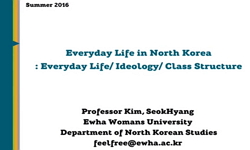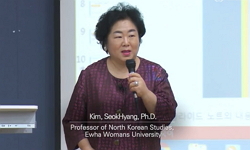Since 1989 when the North Korean nuclear issue first rose to global prominence, efforts by the international community to resolve the issue have not moved it meaningfully closer to the actual elimination of North Korea’s nuclear weapons program and ...
http://chineseinput.net/에서 pinyin(병음)방식으로 중국어를 변환할 수 있습니다.
변환된 중국어를 복사하여 사용하시면 됩니다.
- 中文 을 입력하시려면 zhongwen을 입력하시고 space를누르시면됩니다.
- 北京 을 입력하시려면 beijing을 입력하시고 space를 누르시면 됩니다.



Toward a Governance System and Political Understanding to Permit a Verified Nuclear-free Korean Peninsula: Policy Developments and Operational Challenges = Toward a Governance System and Political Understanding to Permit a Verified Nuclear-free Korean Peninsula: Policy Developments and Operational Challenges
한글로보기https://www.riss.kr/link?id=A100266551
- 저자
- 발행기관
- 학술지명
- 권호사항
-
발행연도
2014
-
작성언어
Korean
- 주제어
-
등재정보
SSCI,SCOPUS,KCI등재
-
자료형태
학술저널
- 발행기관 URL
-
수록면
471-486(16쪽)
- DOI식별코드
- 제공처
-
0
상세조회 -
0
다운로드
부가정보
다국어 초록 (Multilingual Abstract)
Since 1989 when the North Korean nuclear issue first rose to global prominence, efforts by the international community to resolve the issue have not moved it meaningfully closer to the actual elimination of North Korea’s nuclear weapons program and weapon holdings. While North Korea has succeeded in getting the United States to the negotiation table by using the nuclear card and consolidating its own regime security, the process of resolving the issue has been locked in a cycle of negotiation, agreement, abrogation of agreements, the heightening of crisis, and renegotiation. Thus, whereas the Six-Party Talks have yielded agreements to end North Korea’s nuclear programs, notably through the September 19, 2005 Joint Statement and the February 13 Agreement of 2007, North Korea has continued to develop its nuclear weapons program. It is therefore clear that the North Korean nuclear issue is showing little, if any, sign of being resolved despite pressure from the international community, including the South Korean government’s suspension of economic assistance and cooperation with the North, and the UN Security Council sanctions against the North. This paper accordingly examines the North Korean nuclear issue-the most pressing security problem on the Korean Peninsula during the past two decades. This paper explores the recurring pattern of the North Korean nuclear crises and North Korea’s negotiating behavior, analyzing the core and critical issues of dealing with the North Korean nuclear program and the difficulties that have arisen in the process. In so doing, policy priorities are identified that could help to bring about a nuclear weapons-free Korean Peninsula.
동일학술지(권/호) 다른 논문
-
Media Selectivity and U.S. Humanitarian Intervention: Reflection on the 1991 Crises in Iraq
- 한국국방연구원
- ( Ku Youn Chung )
- 2014
- SSCI,SCOPUS,KCI등재
-
- 한국국방연구원
- ( Rajaram Panda )
- 2014
- SSCI,SCOPUS,KCI등재
-
- 한국국방연구원
- ( Renato Cruz De Castro )
- 2014
- SSCI,SCOPUS,KCI등재
-
- 한국국방연구원
- ( Hee Jin Kim )
- 2014
- SSCI,SCOPUS,KCI등재





 KCI
KCI KISS
KISS






